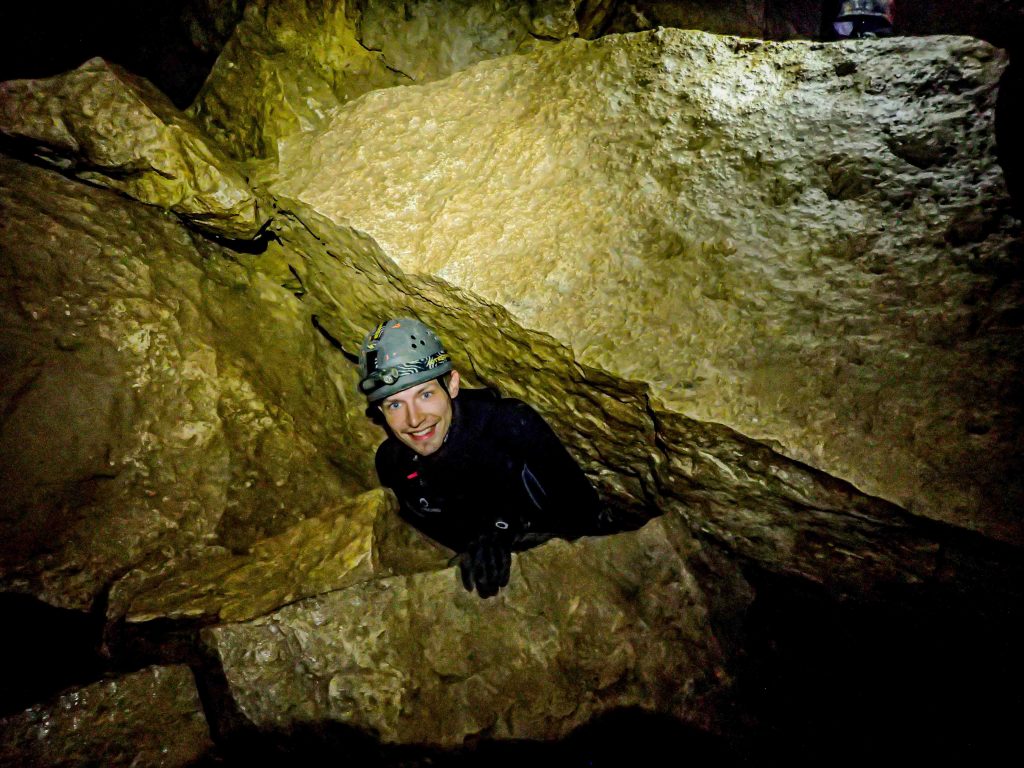
Jakub Kaleta has an unusual hobby. Since about five years, he is exploring caves on his own. These are short day trips, which take him out of his daily life into an alien world. It is a thrill and nature experience at once – a real adventure. He doesn’t need lots of technical equipment: usually a headlamp and his smartphone are enough. He reaches the caves by car or bicycle. It is a form of Slow Travel. Expeditions can be started within the own region, as there are accessible caves in almost every country. Jakub is mainly exploring the Jura Mountains in Poland and the caves of the Swabian Alb in Germany. During travels to Southeast Asia and Greece, he also scouted some caves. Away from the sights that tourists usually visit on their stay there. He says that all caves are basically similar, but at the same time each cave is individual and has its own special features. I interviewed him about his passion.
What brought you to start with the cave expeditions?
My father-in-law from Czestochowa in Poland loves to take his guests to excursions to the close Krakow Czestochowa Jura Mountains. This is a low mountain range, which is famous for its white limestone and caves. Again and again, we climbed with torches into caves during this trips. I liked it so much that I got kind of crazy about it. When we were visiting our family in Poland, I wanted to find all accessible caves in the region and explore them. Luckily, I then noticed that the Swabian Alb in Germany has also a lot caves to offer – meaning caves without artificial lights and artificial paths for tourists. Therefore, I could continue my hobby at home. I started exploring the caves in Southern Germany. Since then, I always check while traveling, if there are any caves around to explore or I search directly destinations, which I could travel to because of an interesting cave.
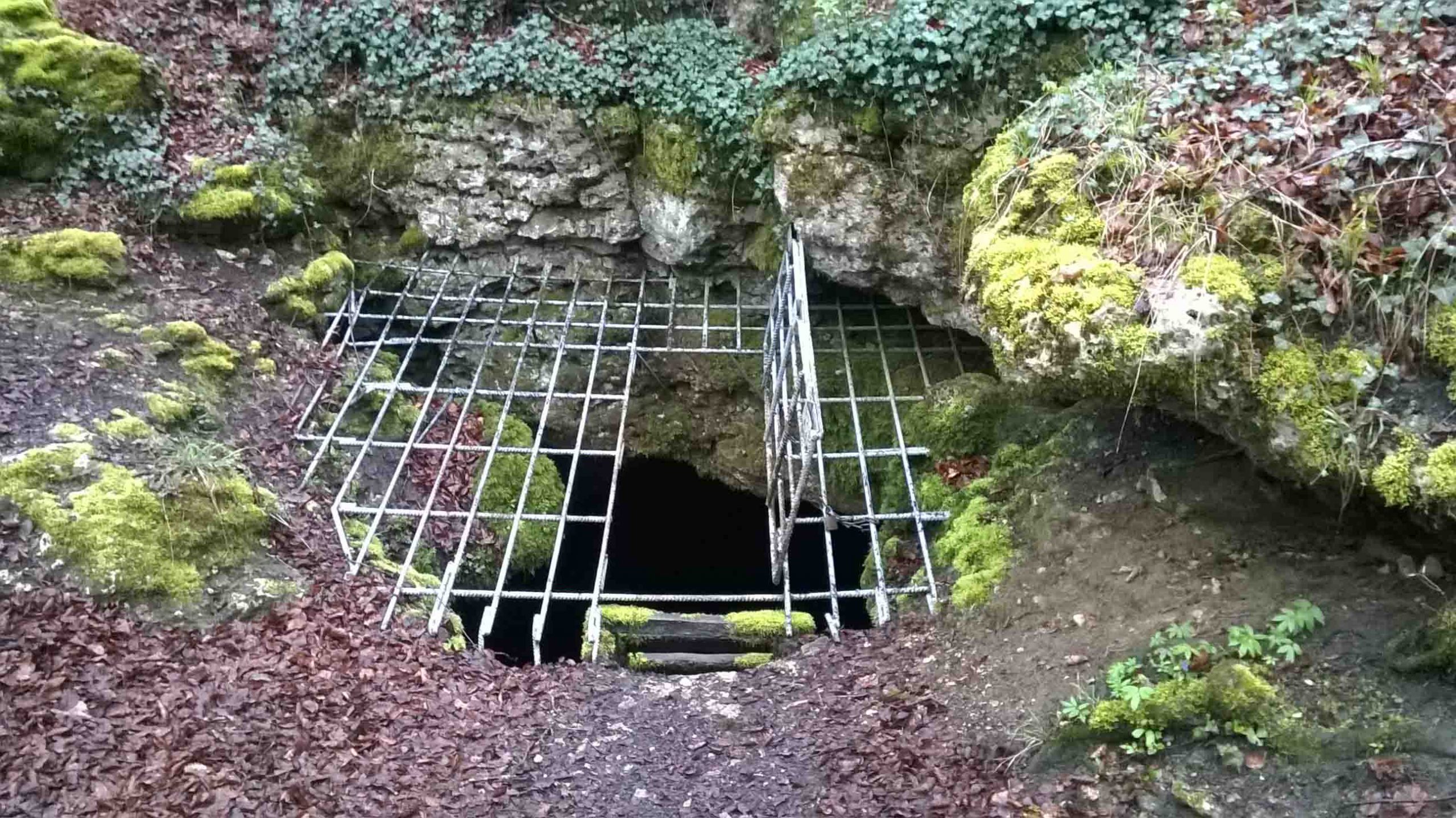
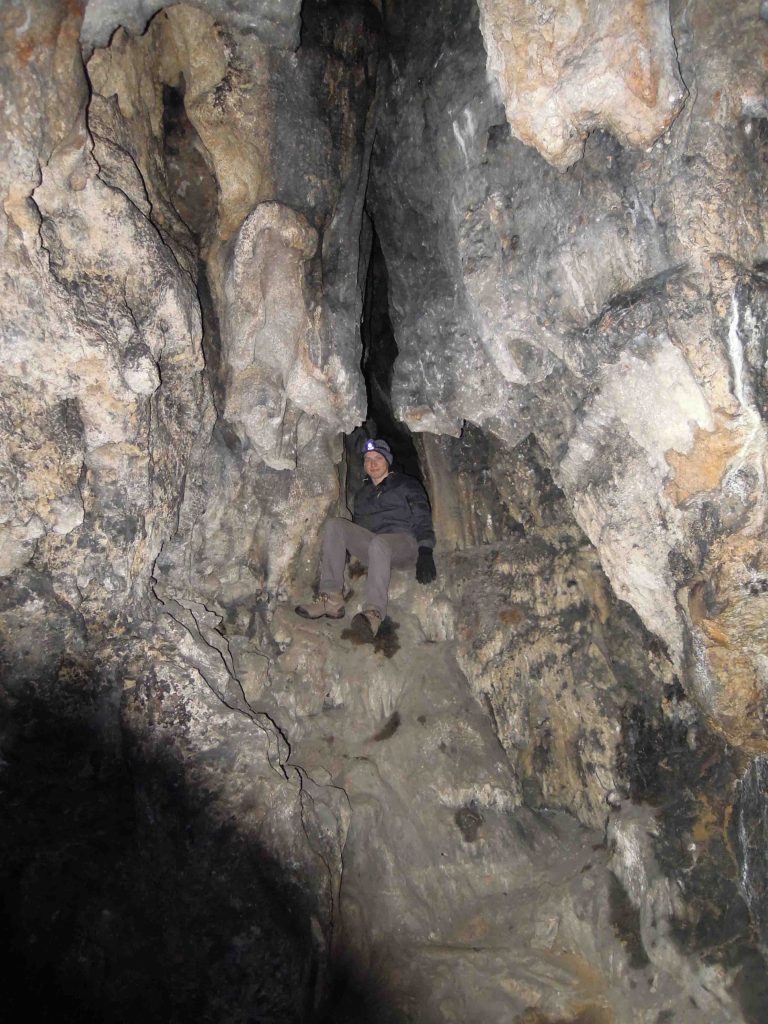
In your opinion, which people are interested in caves?
In a wild cave you always feel like an explorer who scouts a bizarre place that not many people know about exists and just a few people have been to. And the nicest thing about it: you don’t need to travel far in other countries or spend a lot of money to get this feeling. You can experience it in the course of a relaxed day trip. So, if someone is curious to experience something new and unknown and who likes a little thrill, cave explorations are exactly the right thing.
How do you find the caves you want to visit?
For regions with many caves there are usually cave guides[1] in form of books in which you can find information about locations, sizes and special hazards of the caves. Within the guide I choose a cave that interest me and then research the best way to the entrance by using online hiking maps. Most of the time, there are plenty of caves at one spot so that you can visit more than one cave during one excursion.
What kind of preparations are you doing ahead of an excursion?
The most important equipment are a helmet, good shoes and a decent torch, ideally a headlamp so that your hands are free to crawl and climb. You should always wear a helmet because bumping the head on the ceiling is occurring over and over again. Furthermore, stones can fall from the ceiling. The decent shoes are needed for getting some grip on the wet and loamy stones. Additionally to the headlamp you should carry an extra torch, in case of a lamp failure. For longer caves you will need warm clothes because temperatures in caves are usually constantly cool. And you have to be prepared for climbing out of the cave wet and dirty. Crawling through water and clay are no exception. Many caves have deep, vertical shafts that demand abseiling. Without the right equipment and experience you should keep out of these caves otherwise you are risking your life.
How exactly is a cave expedition structured?
Sometimes the most difficult part is to find the cave entrance. You are hiking with GPS and your map through rough terrain, looking in every rock fissure until you find the right hole. In some cases, the expedition is already over at this point because the cave is closed with a grid due to reasons of nature conservation. But if the entrance is open, you can equip yourself with the headlamp and helmet and you can get started. Almost every time, there are large cave spiders with their white cocoons close to the entrance. Bats are a rarely seen. Deeper inside the cave, the world starts taking bizarre shapes. Big halls alternate with tight crawl spaces, some paths seem endless, others are ending promptly. Some halls are decorated stunningly with sintering while others are fully covered in cave clay. Time runs different in caves – a distance, which you would cover outside in half an hour can take half a day in a difficult cave. Often it is a challenge to find the further path – you may have read that somewhere there should be a continuation but the orientation in the contorted paths is difficult and you sometimes have to search for a long time until you find the right path. A very special moment is when you reach the exit again – for this it is worth to turn of the light to feel how it slowly gets warmer, how the odors from outside are perceivable and how intense the light and colors are from the outside world.
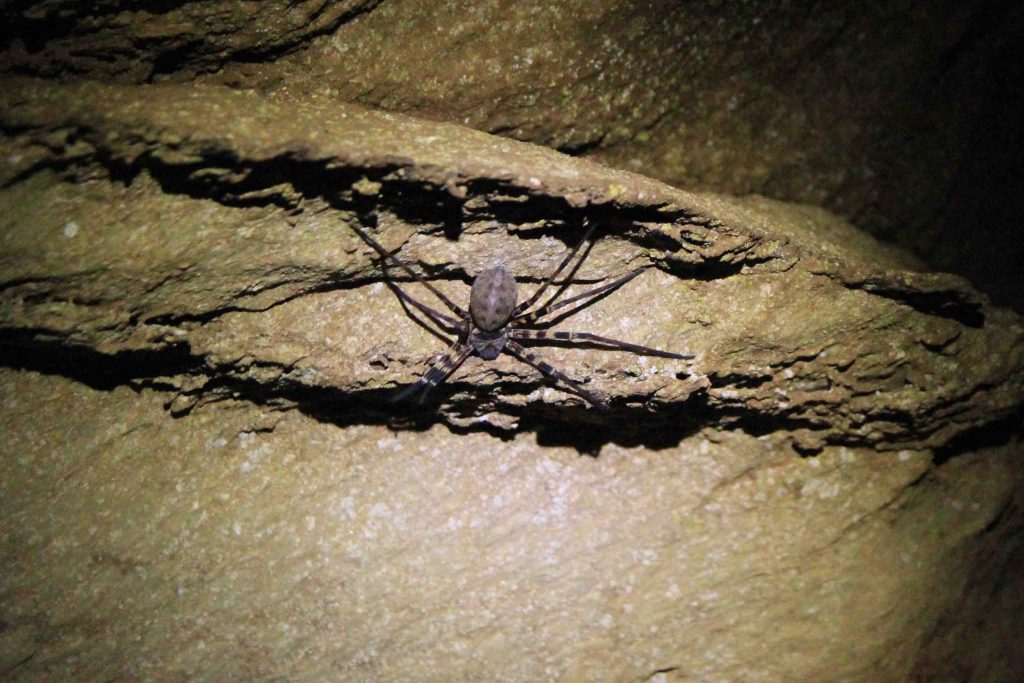
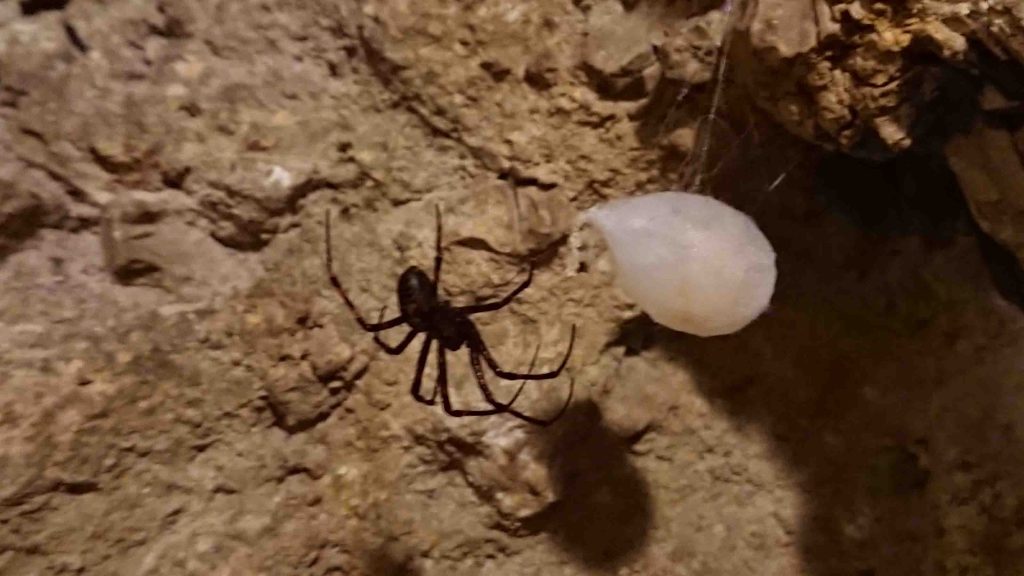
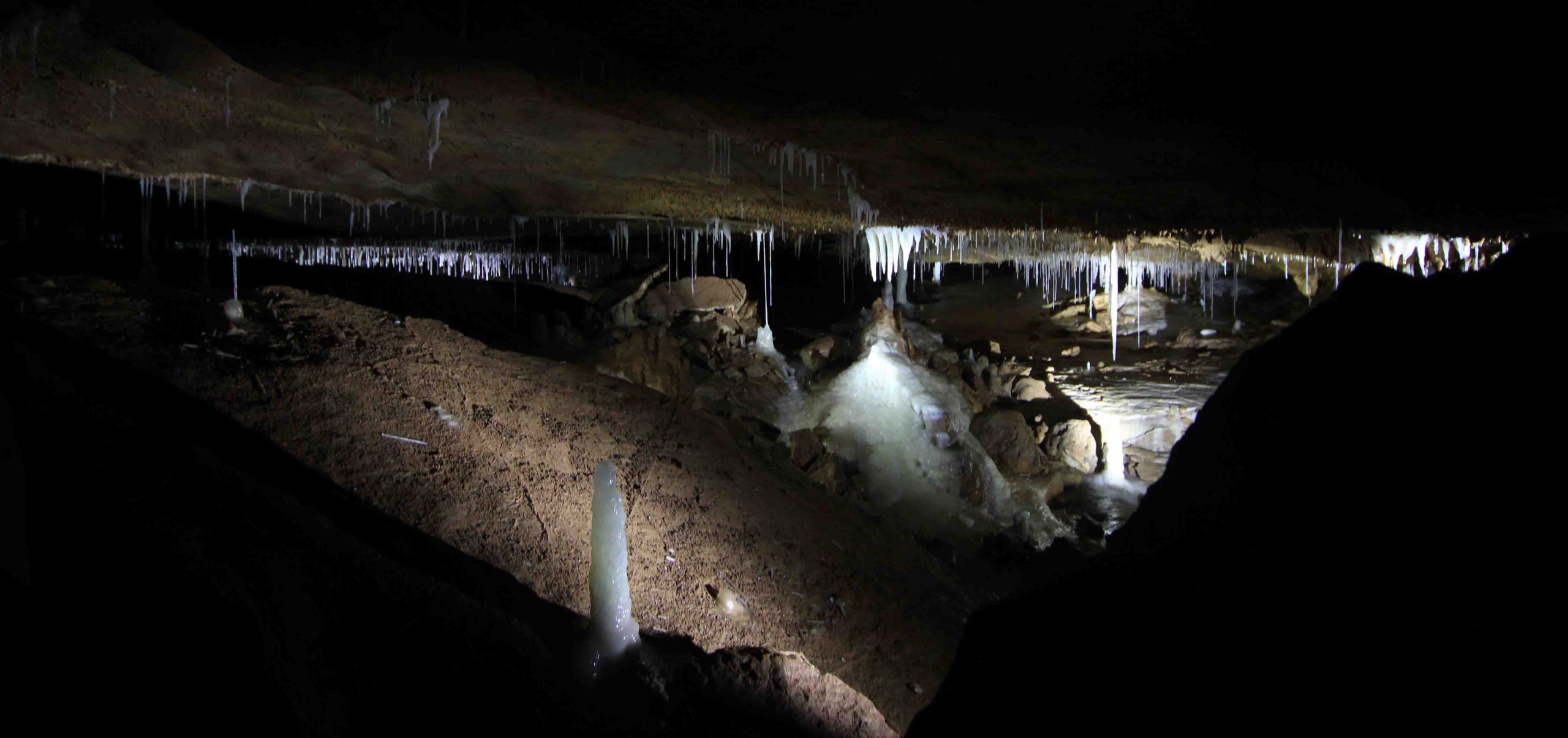
Do you need to be sporty to explore caves?
Usually there is a cave for everyone. Many caves are set up for visitors with lights and convenient paths, which anyone can walk. Also, within the wild caves are many that are accessible easily from a hiking trail. Just a steady footing is necessary. It starts to get sporty when you need to crawl or force yourself through bottlenecks. In most of the caves this usually demands more flexibility and overcoming than sportiness. Of course, this is for smaller and thinner people a bit easier. But there are also very long cave expeditions, like e. g. the Falkensteiner Cave in the Swabian Alb. There you are on your way for about 12 hours in cold water, have to pressure yourself through tight cracks and climb over slippery and loamy rocks – at this point it’s like a challenging mountain tour and you should be fit.
So, cave explorations are an activity for everyone?
If someone is claustrophobic or scared of the dark, it may be not the right hobby. But if you want to try it, you should start ideally with a public, well maintained cave – or with an easily accessible, wild cave, which you can reach from a hiking trail and which is well marked. If you are careful, less known caves can be explored without problems on your own as well. Dangerous caves are usually closed and accordingly marked. If you want to try something more challenging, guided cave tours are a good fit. There are tours for different levels from easy family tours to multi-day extreme tours. I myself did an organized tour with guide in the Falkensteiner Cave.
Are you always on your own while exploring?
You shouldn’t explore caves on you own – in caves is no mobile reception and if something happens you should have someone with you who can get help. Therefore, I usually take someone with me. Sometimes I take part in organized cave tours, there you are always in a group with a guide. There are also clubs that organize expeditions but I did not try it out yet.
Was there already a dangerous situation – an accident or emergency?
Luckily, so far not. Certainly, I had to familiarize myself with the characteristics and hazards of each cave. Are there any shafts in which I could fall? Are there areas that could collapse? When there is water in the cave, like the Falkensteiner Cave, the way back could be blocked, if the water level is rising due to rain outside. Therefore, I always check the weather forecast. Additionally, you definitely should tell someone which cave you are entering.
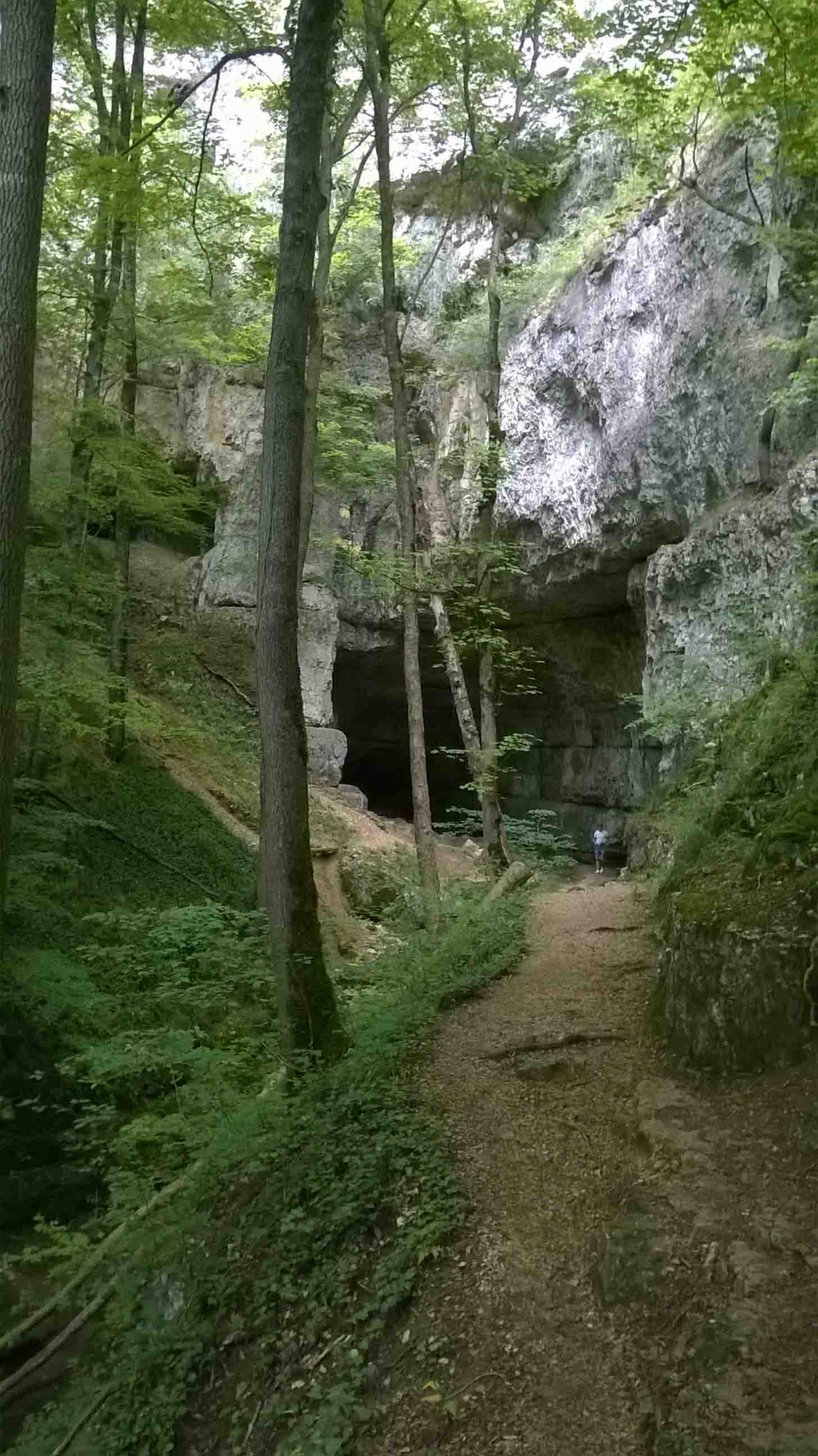
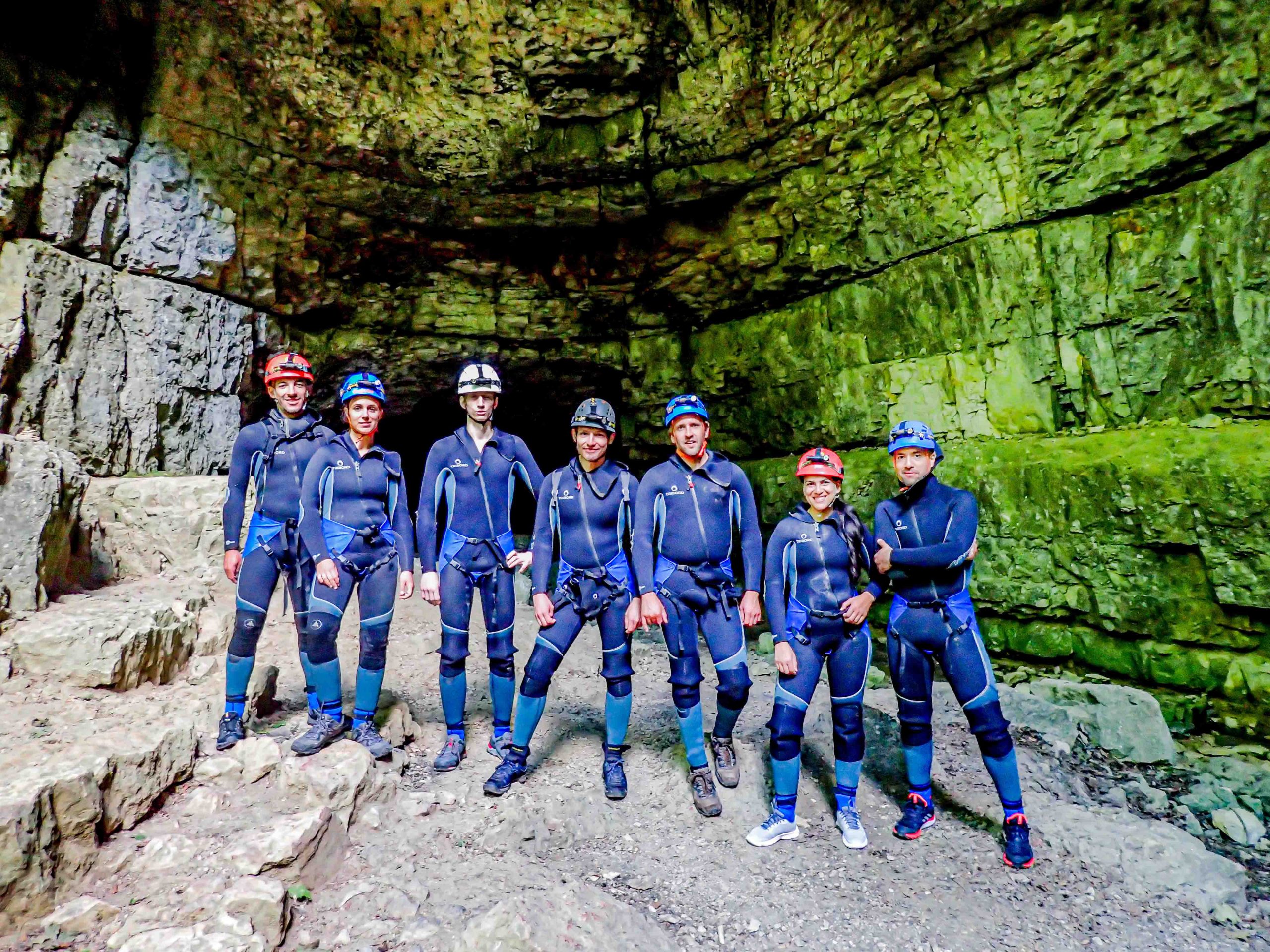
Does it harm the caves when they are explored by humans?
Caves are very fragile places and ecosystems. A careless touch can destroy dripstones that took thousands of years to grow. A disturbance of bats in hibernation can endanger their life. This is why in Germany entering caves is forbidden in winter time (from November till April). Unfortunately, you see a lot of garbage, graffiti and destroyed dripstones in caves.
What do you like so much about exploring caves?
Caves can be count to the less places that can’t be captured in pictures and youtube videos. You have to be there in person to get a real impression about the character and course of a certain cave. And with each new pathway and room you are surprised all over again. You never get an overview over the whole cave, instead you have to work your way piece by piece through and explore it. Because of the cave’s alienness you sometimes feel like on another planet, although you are just a few kilometers from your own home.
Which cave is on your bucket list?
Definitely the large caves between Laos and Vietnam, e. g. the Sơn Đoòng Cave, which has the largest known cave space (cross-sectional 250 x 150 m). Or the Hölloch in Switzerland, which has about 200 km path distance and can be explored with multi-day tours including sleeping in the cave.
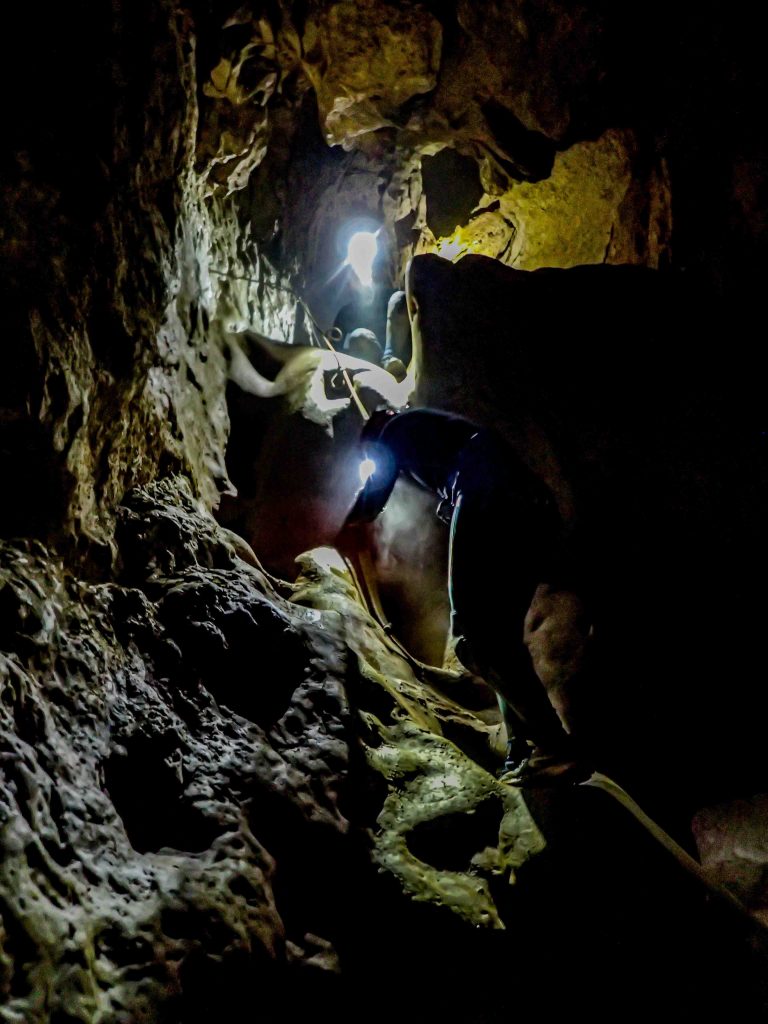
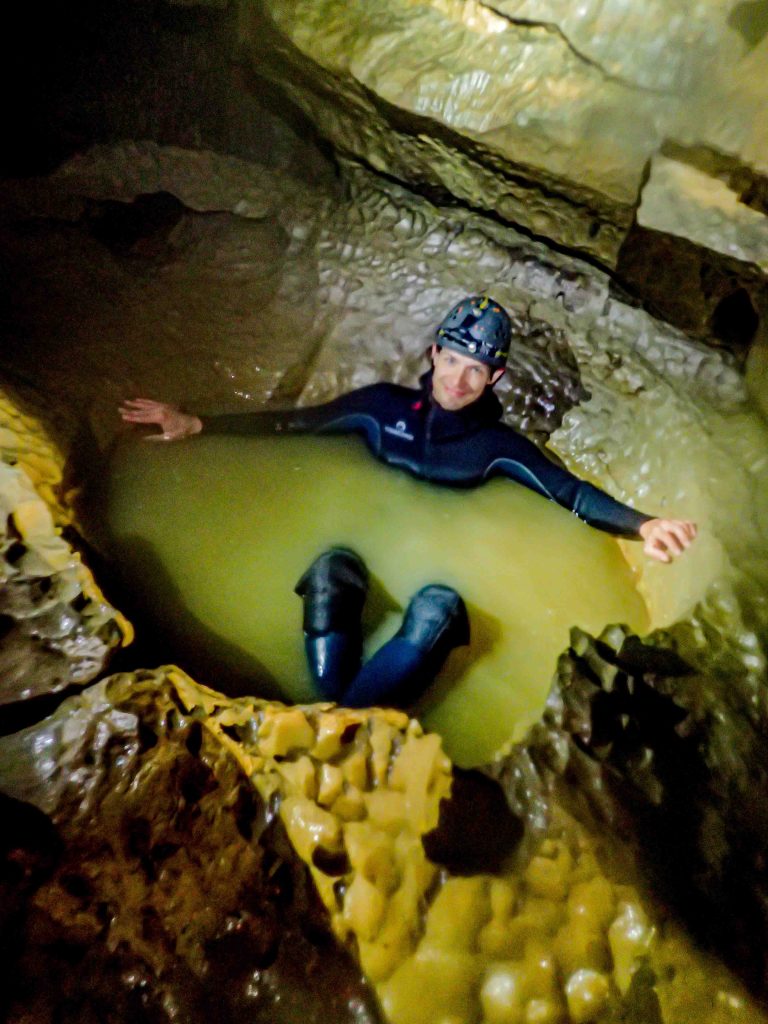
What did you learn about yourself during the cave explorations?
That’s hard to say. Maybe that I can think myself back into my childhood inside caves. Going on exploration tours and make yourself really dirty while doing it!
Do you see yourself as a Slow Traveler?
Partially. I love to travel offside the beaten tracks, to visit places that are not mentioned in many guide books, to not stay in hotels, but private accommodations where you meet the people who live in the destination – and to reach places by bike or foot instead of rental car or cab. At the other hand, I usually want to experience and explore the most possible in a short time period. Therefore, the travel is not always slow and mindful.
How do you see cave explorations in regards of Slow Travel?
Cave explorations can certainly be Slow Travel. You discover the exotic for less money and in front of your own doorstep. You can explore the caves with all your senses, you have to get dirty and wet to reach your destination. You can dive deep into the history of earth and learn to respect our fragile nature, which took thousands of years to create beautiful dripstones. To feel small in a large room and to mind the small animals whose living space you enter and to try not disturbing them.
Jakub’s tips on cave research:
- Cave exploration stories with pictures and good humor: Caveseekers
- Cave explorer club in the Swabian Alb: Arge Grabenstetten
- Good lists of caves in the Swabian Alb: Cojote Outdoor
- Online maps fort he Swabian Alb including cave entrances and hikes:
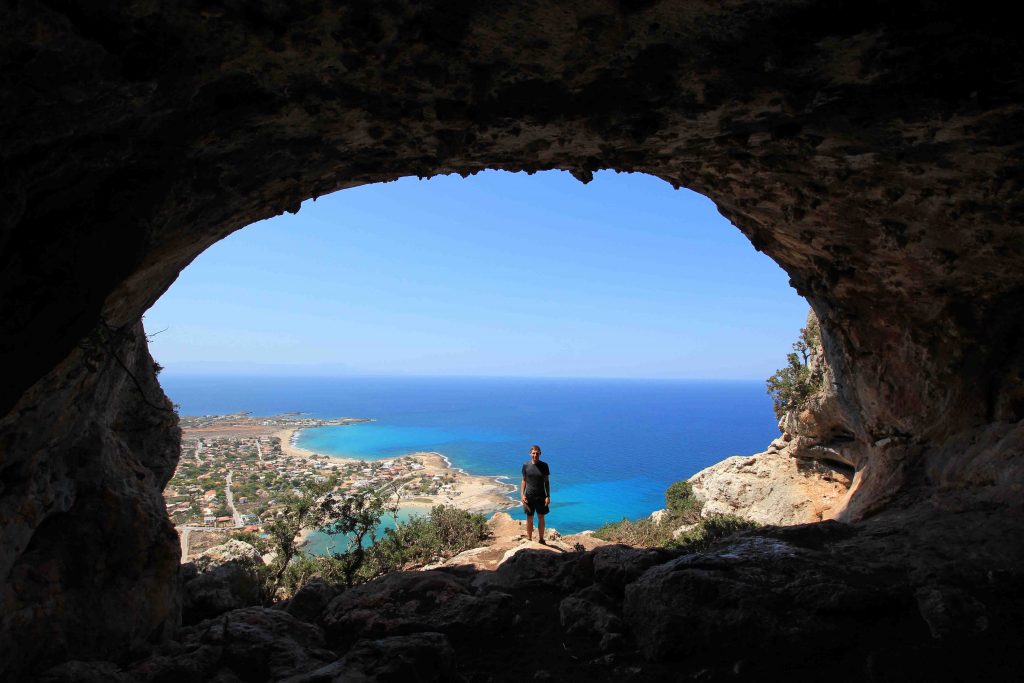
E. g. the cave guide book Höhlenführer Schwäbische Alb of Hans Binder and Herbert Jantschke (No paid advertisement, but a reference from the interview partner).
Interview by Anika Neugart